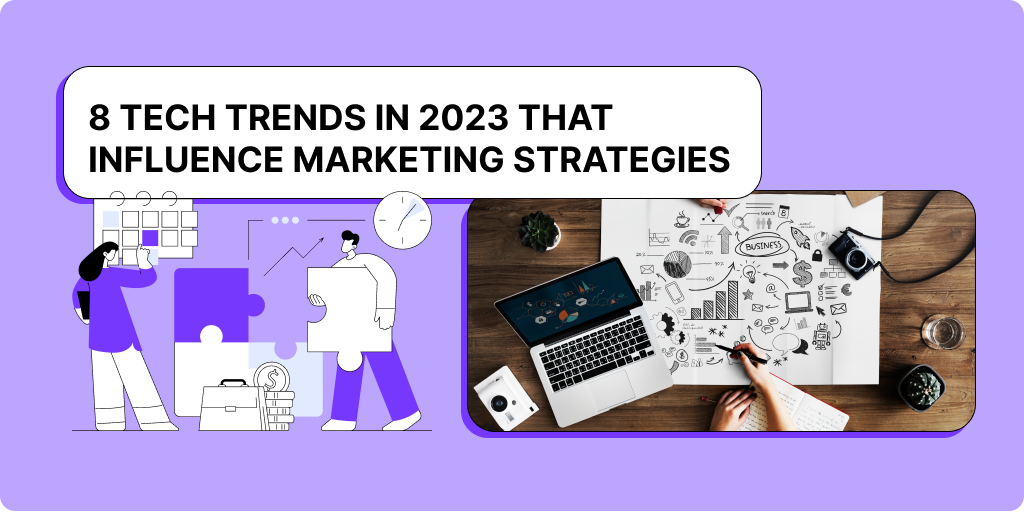While many marketing concepts stay constant year after year, the instruments used by firms to achieve marketing success change dramatically over time. Newspaper advertising was formerly quite widespread. Digital advertising and artificial intelligence are becoming key components of corporate marketing strategies. Every year, new technical developments emerge for businesses to consider. Those that keep ahead of the curve may even achieve new heights of marketing success. Here are eight themes that we feel small businesses should capitalize on this year.
Authentic long content
The trend in content marketing has been toward long-form, instructional material that attempts to assist people rather than sell to them. This tendency will only continue, as seen by Google’s Helpful Content Update, which was released late last year. Content that completely answers people’s inquiries and helps them toward the greatest solution for their situation will do the best.
Sharing information on issues that are of interest to your customers is an excellent method to increase brand awareness and client loyalty. You may earn trust by demonstrating that you care about more than simply the transaction. Whether your content is a social media post, a blog, or an email blast, strike a balance between showcasing your items and offering relevant, actionable information.
Short video content
While long-form instructional information is still effective for blogging or podcasting, short-form video content is becoming more popular. Users are becoming more used to short bursts of amusing or educational video material, thanks to the development of TikTok and Instagram Reels. Brands may take advantage of this trend to reach out to their target audience swiftly and efficiently in the midst of a flood of other video content.
As viewers’ attention spans decrease and their attention spans are tugged in several places at once, effective short-form video content may get a brand’s message through in a couple of seconds. To reach the broadest possible audience, provide long-form information for users who want to go deep and educate themselves but short-form video content for users who are scrolling to pass the time.
Chatbots and conversational AI
Chatbots and more advanced conversational AI will continue to enter the market and become more accessible to small enterprises. These tools can answer simple queries from clients at any time of day or night, even if you’re busy with other responsibilities. The introduction of ChatGPT, for example, demonstrates that the era of AI-driven marketing is here. Expect more small businesses to use easily available technologies to write marketing content or engage with clients around the clock.
According to Drift’s State of Conversational Marketing research, over 42% of customers make purchases using conversational AI and chatbots. Despite this, the majority of small company owners polled indicated they did not use technology.
Voice search
With the growing popularity of mobile devices and speech services such as Microsoft Cortana and Google Assistant, voice search is one area where your small business may differentiate itself from the competition. If your company is online, there’s a good probability that individuals may find your website or content marketing materials using voice search.
Data analytics
Current developments are around predictive data, intelligent, scalable, and more flexible datasets, edge computing for quicker analysis, and hybrid computing, which combines off-premise and on-premise cloud solutions. You’ll also see an increase in the usage of machine learning-driven solutions such as augmented analytics, engineering decision analytics, and data visualization for improved decision-making, business management, insights, and automation.
Social media marketing
With over 4.26 billion individuals utilizing social media globally, social media platforms are already essential avenues for digital marketers. This figure is predicted to exceed 6 billion by 2027, ensuring social media’s long-term viability as a component of all digital marketing operations.
Social media is changing as well. Brands will need to adapt to the changing landscape in order to remain relevant to their audiences and maintain high engagement. This implies better social listening to consumers and competitors alike. Brands will benefit from using social listening solutions that assist in shortening the process and generating better information.
The trend toward micro-influencers in social media influencers will continue. Influencers with a narrow emphasis on a given topic will continue to rise in popularity. What matters is the niche.
Metaverse
The metaverse is today’s futuristic combination of virtual reality (VR), augmented reality (AR), and artificial intelligence (AI), resulting in a new 3D immersive experience that allows users to combine the physical and digital. Although the metaverse failed to gain traction last year, anticipate more broad adoption as technology advances and businesses adapt to consumer expectations.
Interactive commercials like NASCAR’s on the interactive game platform Roblox are examples of the metaverse in action. Users may design their own avatars, which allow them to “feel” experiences without having to pay for them. This has given rise to the marketing industry’s newest word, “gamevertising,” which refers to the use of games by marketers and businesses to sell their products.
On the retail front, businesses leverage technology such as augmented reality to create blended shopping experiences in which consumers may virtually try on garments, sit on chairs, dwell in certain geographical places, and so on.
Diversity, equity and inclusion
Companies have been debating their diversity, equality, and inclusion (DE&I) policies in recent years, primarily as they pertain to their internal staff and recruiting strategies. DE&I will become increasingly significant in digital marketing. Users want to see marketing campaigns and commercials that represent the variety of the world around them. Therefore consider DE&I when developing imagery and content for your marketing efforts.
Brands that involve a wide range of individuals in their marketing find higher sales across all demographics. According to Adobe research, 61% of customers said diversity in marketing and advertising was important to them, and 38% said they were more inclined to patronize firms that launched diverse marketing campaigns than those that did not. Gen Z places a premium on racial and gender diversity in marketing and wants firms to participate in social justice debates, indicating that these trends are here to stay.
Conclusion
These trends are predicted to have an impact on marketing this year, but that doesn’t mean you should instantly stop what you’re doing and switch to utilizing different and more modern technologies to effectively advertise your brand.While sophisticated new marketing technologies are introduced every year, word-of-mouth marketing remains important. Consumers may have asked their pals where to go for the greatest hamburger in town decades ago. People now question all of their pals after conducting a fast internet search and reading reviews of local burger establishments.
Changes in technology haven’t changed the fundamental notions of marketing, but new technology magnifies every achievement and failure. Previously, giving a terrible burger to one customer may result in that consumer recommending their friends not to dine there. A nasty Yelp review can now discourage hundreds of potential consumers. Understanding new technical tools may substantially improve your organization, yet, if you don’t comprehend how the technology can aid you, adding new tools to the mix is pointless. As the North American chairman of Landor Associates, Adamson advised corporations such as Marriott and HBO. He believes that many businesses get too wrapped up in the latest and best marketing technologies.
You may not need to follow every trend mentioned in this article. Adding a chatbot or more authentic content to your present marketing plan mix, on the other hand, may propel your company to a new level of client engagement and financial success.
Bonus Advice
The technology you choose to adopt in your business is determined by the demands of your company and the aspirations of your consumers. You could be better off not embracing a new marketing trend, especially if you don’t comprehend the technology and are just doing so because other firms do. While we are rapidly approaching a technologically dominating world, small and midsize enterprises must prioritize the technological developments that might help them expand their company. How do they accomplish this? They must ask the four questions listed below:
- Who is my target audience?
- What and where are the holes in my business?
- Will this technology assist me in closing business gaps?
- Do I have the resources to keep this technology going in the long run?
Use these questions as a check to ensure you aren’t rushing into a marketing trend that isn’t right for your company.
 Open Sesame: 225 Engaging Email Subject Lines + Crafting Tips
Open Sesame: 225 Engaging Email Subject Lines + Crafting Tips




